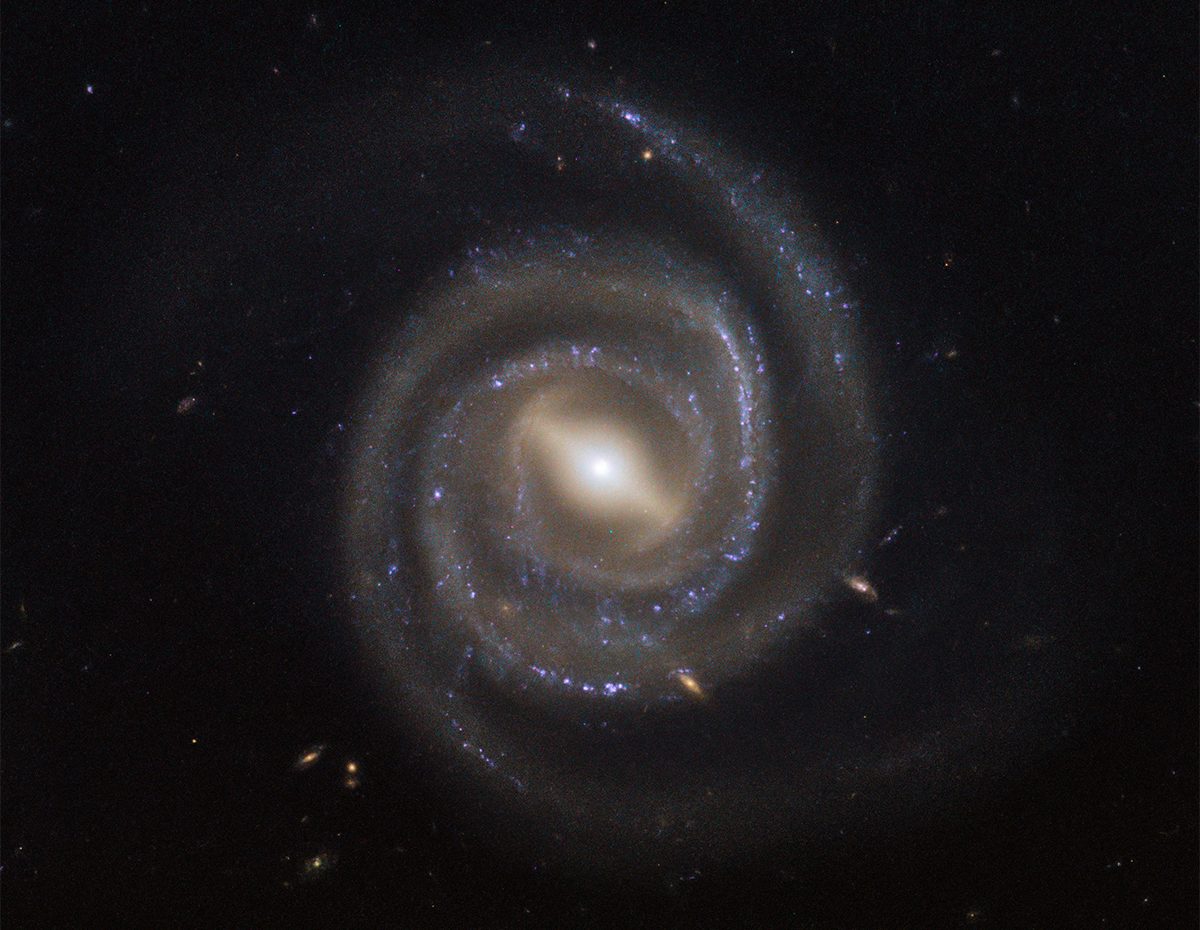Astronomer James Nightingale explains how to find invisible black holes using the light that bends around them.
One of astronomy’s most astonishing recent discoveries is a supermassive black hole (SMBH) named Sagittarius A* at the centre of our Galaxy, with a mass exceeding one million times that of our Sun.
This made headlines most recently via the release of the first ever image of the black hole at the centre of our Galaxy.
Astronomers have since revealed that supermassive black holes inhabit the cores of many more distant galaxies
This suggests that a supermassive black hole resides at the heart of almost every galaxy in the Universe.
How astronomers study supermassive black holes
To study supermassive black holes, astronomers map out the orbits of stars in nearby galaxies.
They observe a distinctive peak in the stellar velocities near the galactic centre, indicative of the intense gravitational force exerted by the supermassive black hole.
In more distant galaxies, their central supermassive black hole may be ‘active’, where the surrounding material is moving so fast that it gets hot enough to give off bright emissions across the full electromagnetic spectrum, from gamma rays to the radio.

By studying the relativistic effects of the black hole’s gravity on this emission, astronomers can once again deduce its mass.
Put simply, the larger the galaxy, the more massive its black hole tends to be.
In fact, the most colossal black holes ever discovered, known as ultramassive black holes, take up residence in the cores of the most massive galaxies.

Observing the largest black holes
One burning question remains: How enormous can black holes truly be?
This poses a challenge for traditional methods of measurement.
The most massive galaxies, which should harbour the largest black holes, reside at great cosmic distances from our Milky Way, too far for us to resolve the orbits of their stars.
What’s more, their black holes are rarely active.
A new window into the supermassive black holes of distant massive galaxies is sorely needed.
Gravitational lensing
My research focuses on gravitational lensing, which occurs when the gravitational field of a massive galaxy curves the very fabric of spacetime
This distorts the path of light coming from a remote galaxy situated behind it.
This apparent bending of light creates a magnifying effect, akin to using a magnifying glass to enlarge an image.
Through the gravitational lens Abell 1201, nature presented me with a unique opportunity.
To discover a black hole via gravitational lensing.
Unlike other gravitational lenses, a small portion of the light from the background galaxy passes tantalisingly close to Abell 1201’s central core, within reach of the supermassive black hole’s gravity.

Discovering the largest known black hole in Abell 1201
I undertook a detailed numerical analysis, whereby I simulated millions of different ways for light to have travelled across the Universe and compared them to what was observed in the image of Abell 1201.
Only when the bending of light due to its central supermassive black hole was included, in addition to the bending caused by its stars and dark matter, was I able to reproduce what was seen in the data.
The gravitational lensing signal in Abell 1201 is so significant – that is, the path of light has been deflected so much – that an ultramassive black hole approximately 33 billion times the mass of our Sun is responsible.

Not only had I discovered the first black hole via gravitational lensing, it was one of the largest ever found.
I am now searching for gravitational lensing around the most massive known galaxies in the Universe.
I hope to find more objects like Abell 1201, that can reveal the mass of their central supermassive black hole.
Then we may finally answer the question of how enormous can black holes truly be in the Universe.
The answer to this question will act as a reminder of just how small we really are within the cosmos.
This article originally appeared in the September 2023 issue of BBC Sky at Night Magazine.